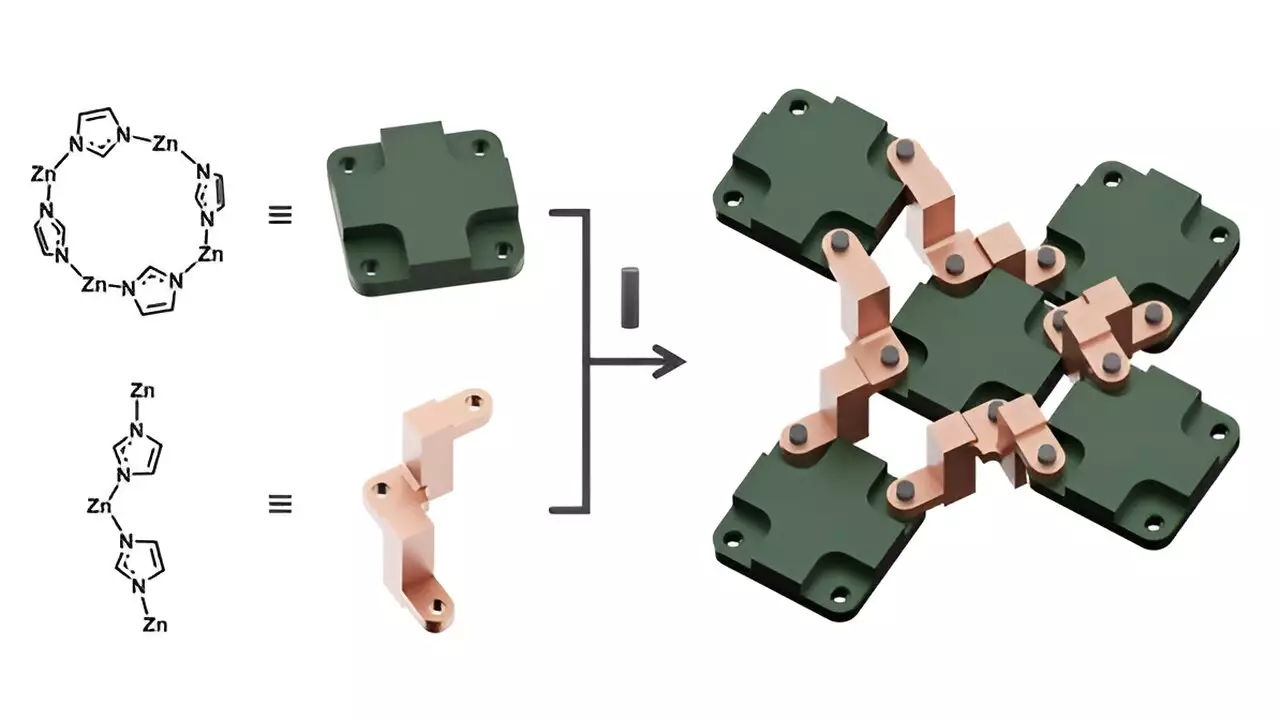In the fast-evolving realm of nanotechnology, the intricate dance of molecular-scale devices is increasingly becoming a focal point for innovation. The desire to control mechanical movements at the atomic level is not merely an academic pursuit; it is a necessity driven by our ever-growing reliance on advanced technologies. Researchers at the Ulsan National Institute of Science and Technology (UNIST), under the leadership of Professor Wonyoung Choe, have made a significant stride in this arena with their groundbreaking findings on zeolitic imidazolate frameworks (ZIFs). These advanced molecular frameworks are not just passive structures; they emulate sophisticated machinery that has the potential to transform data storage and several other applications.
Molecular Machines: Bridging the Gap between Theory and Application
Historically, the application of machine-like mechanisms in metal-organic frameworks (MOFs) has been limited due to the lack of inherent machine-like behaviors in these structures. However, the UNIST team has successfully integrated mechanical elements into these frameworks, overcoming a key barrier. By utilizing MOFs as foundational structures and incorporating nanoscale mechanical components, they have crafted devices capable of executing complex movements with remarkable precision. This melding of machinery within a solid-state environment opens new avenues for the engineering of materials that can adapt and respond to external stimuli, including temperature fluctuations and solvent interactions.
What makes this research particularly exciting is the implementation of the slider-crank linkage system within the ZIFs. This foundational principle translates rotational motions into linear actions, showcasing a level of mechanical functionality that was once thought unattainable in solid-state frameworks. The team’s use of single-crystal X-ray diffraction provided critical insights, confirming that the linkage structure closely mirrors that of traditional mechanical systems, while also operating on nanoscale parameters.
The Superiority of Elasticity and Flexibility
One of the standout findings from the UNIST research is the exceptional elasticity and flexibility exhibited by the newly developed ZIFs. Unlike their predecessors, which often struggled with rigidity, these molecular machines display a unique capacity for adaptation. This characteristic is crucial for the creation of applications that demand dynamic and responsive materials. By altering the mechanical components within the ZIF structure, researchers can fine-tune the nanoscale movements, thereby enhancing performance in potential applications ranging from advanced data storage solutions to smart materials that react to environmental changes.
The flexibility observed in these frameworks is not merely a biological imitation but a significant engineering achievement. Professor Choe emphatically pointed out that the mechanical properties observed are fundamentally linked to the design of the ZIFs. The diversity in flexibility stems from how the metal nodes and organic ligands are interconnected, which is a vital aspect for machines that require modular assembly to perform specific tasks. This insight is expected to catalyze further exploration into innovative nanomaterials, laying the groundwork for future breakthroughs.
Future Implications of Molecular Mechanics
The potential implications of this research extend far beyond traditional applications. By enabling machine-like movements at the molecular level, the UNIST team’s work invites a rethinking of materials design. Imagine a future where data storage systems can dynamically adjust based on usage patterns or materials that can self-repair by realigning their molecular structures in response to physical stresses. The opportunities are not just theoretical but are being realized with the advancements in ZIF technology.
As we stand on the brink of this new frontier in nanotechnology, it is clear that the contributions from researchers like those at UNIST will play a pivotal role in shaping future innovations. The underscored mechanical properties of these frameworks signify a shift towards smarter, more responsive materials that could redefine our interaction with technology.

